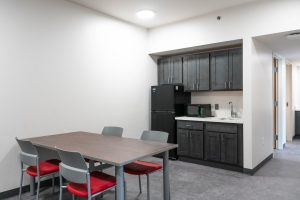Committee Reviews Campus Safety Policies
May 8, 2015
The presidential working group on Safety and Security recently sent students a survey asking for their experiences with and perceptions of Safety and Security. The working group is currently gathering information and tentatively plans to submit its recommendations for changes to Safety and Security policies before the start of the fall semester.
“Our job is not to independently assert our ideas,” said Charles Peterson, associate professor of Africana Studies and a member of the working group. “We’re a filter; we gather information and then we form our recommendations. … This is a good time for all well-meaning institutions to review campus security policies.”
In his column in The Source, President Krislov announced the creation of the committee last semester in response to the deaths of Tamir Rice and Michael Brown.
“I am convening a working group to assess the best principles and practices for ensuring campus safety in an inclusive and equitable fashion,” President Krislov wrote on December 3. “The working group, which will include significant student representation, will meet with a wide range of campus constituencies and contribute to related policy development in tandem with any required collective bargaining.”
Krislov’s announcement also came in the wake of Darren Wilson’s non-indictment on November 24, 2014 and an incident involving Safety and Security officers and College junior Kiki Acey. The incident took place on the night of the Wilson non-indictment announcement and started when Safety and Security officers saw Acey and other students placing a banner on Mudd library in protest.
“I remember [Safety and Security Officer David Bender] picking up his pace and beginning to run after us,” Acey said in Oberlin Municipal Court on April 20. “I was informed, and I had informed my friends, that Safety and Security personnel were not allowed to chase students or to physically detain them. And so I told those that I was with that we were going to walk away. … As I’m running, out of nowhere Officer Cannon jumps out in front of me, and he says, ‘Stop.’ I try to go around him and avoid him, and he grabs me and throws me to the ground. … I was trying to get up from the ground, but he wouldn’t let me get back up.”
According to the Oberlin police report filed by Sergeant Patrick Durica, Acey “ran into Cannon and began slapping him in the chest.” The Oberlin Police Department then arrived at the scene. Acey “continued pulling away and shouting obscenities,” the police report stated. The police officers arrested Acey, who was charged with assault, resisting arrest and persistent disorderly conduct. An Oberlin jury found Acey guilty of persistent disorderly conduct and not guilty of resisting arrest on April 21; the assault charge was dropped during the trial.
As Acey’s testimony shows, the actions of Safety and Security sometimes seem to conflict with what students believe the organization’s policies allow. The presidential working group is focused on making more Safety and Security policies publicly available.
“Part of what we’re focusing on is to make Safety and Security policies accessible and clearly understood by the community,” Peterson said. “Transparency can only benefit.”
According to Marjorie Burton, the director of Safety and Security, the impact of increased transparency can be mixed.
“Transparency is good, but transparency is also a gift for someone that might not mean well. So do you want to give away all your security [policies]? There’s some of it you do, there’s some of [it] that’s questionable and there’s some that you don’t.”
While Burton declined to comment on any specific case, she was willing to speak to the Review about Safety and Security policies in general. Burton first stated that Safety and Security primarily serves as a conduit for information for the College and generates over 1,300 reports a year.
“When we’re in a situation of response to someone’s concern, or something we observe in relation to all of these rules, guidelines, suggested responses — when we’re there, we’re trying to gain information,” Burton said. “That’s our basic function: gain information and then involve the right people. … It’s not a law enforcement role.”
Burton also said that the only kind of scenario in which it would be appropriate for officers to pursue or physically restrain individuals would be one that involves safety: “Safety of the person; safety of the officer; safety of someone else in the community.”
According to Burton, Safety and Security contacts the Oberlin Police Department when dealing with a range of situations.
“[We call the police] if there’s an ongoing felony, or a report of a felony, property felony or a physical felony,” Burton said. “And then there’s other times when there is a physical assault that doesn’t rise to being a felony assault because that’s again a safety thing, a physical safety concern about a person. There are things that are required in Ohio law that we have to report that might not be required in other states. … And then there’s times when there’s an uncooperative person and it’s more of a policy of the College and the Department to have the police respond.”

























